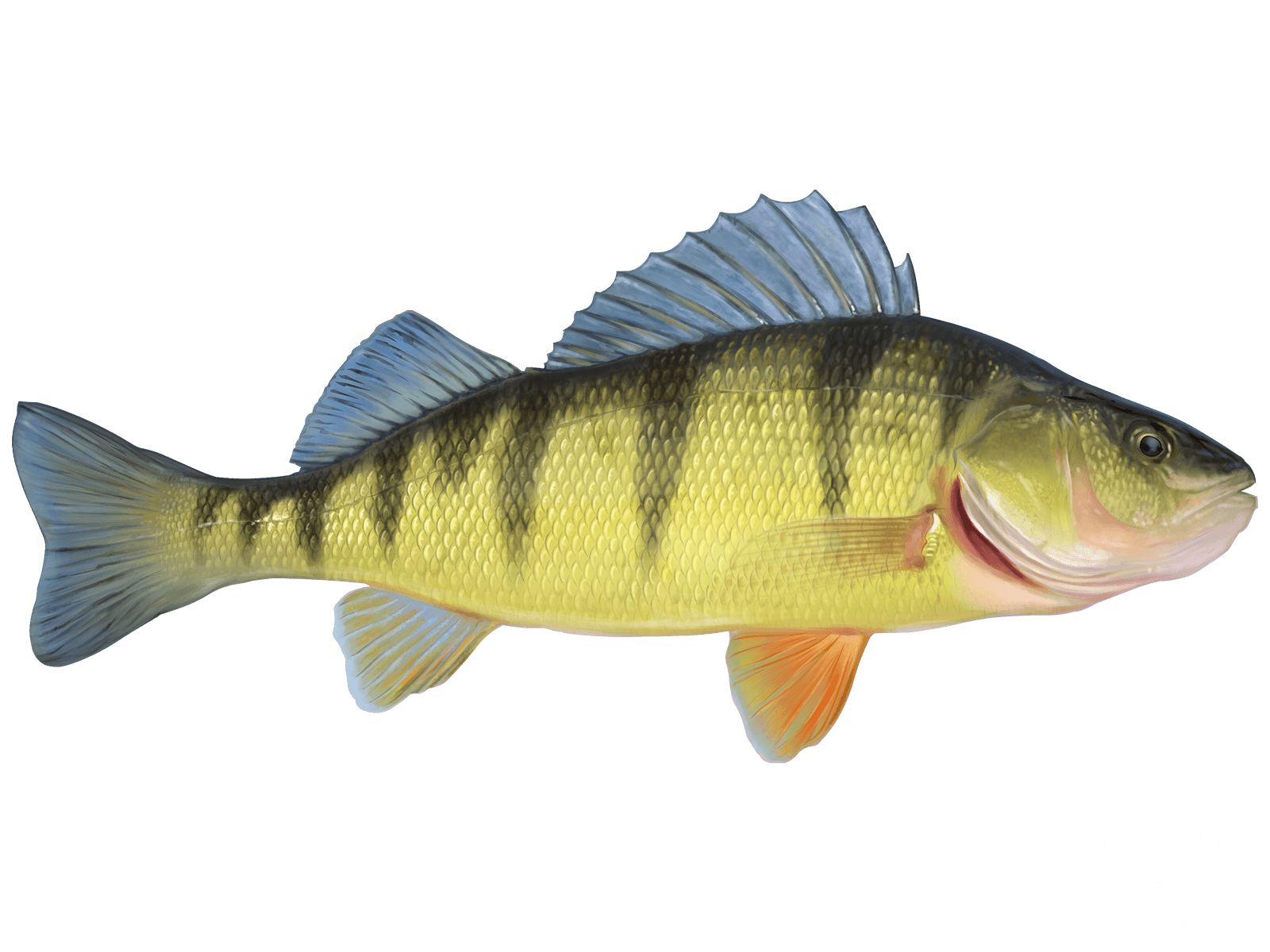American Yellow Perch

Species Details
Perca Flavescens
Percidae
Perciformes
River, Lake, Backcountry
1 - 4 lbs.
1" - 10"
American Yellow Perch (Perca Flavescens) Description
The American Yellow Perch are one of the smaller-sized members of the perch family, Percidae. They have an elongated, oval body with a long blunt snout. Like most perches, it has two separate dorsal fins. The first dorsal fin contains 12-14 spines and 12 soft rays. The second has 2-3 spines and 8 soft rays. They are a golden yellow, however, their color can sometimes vary from bright green to olive green or golden brown. Their sides have a pattern of vertical bars. Their pectoral fins are transparent and amber in color. The juveniles are paler and a whitish color.
Yellow Perch have a large number of sharp teeth. They are rough to the touch because of their overlapping, comb-like scales.
Size and Diet
The largest recorded American Yellow Perch is 20 inches although they are more commonly found at 7.5 inches and 2 pounds.
Yellow Perch eat a variety of invertebrates such as insects, mollusks, chitons, snails, and worms. squids, along with small fish.
Spawning
The Yellow Perch spawning occurs in the spring when water temperatures rise above 36 degrees and typically occurs at night or early morning. Along the shorelines, the females extrude their eggs in long ribbons. You will find them draped along submerged vegetation, dead branches, and trees. Once the females extrude their eggs, groups of male yellow perch will follow and fertilize them.
Interesting Facts
Yellow perch is one of the easiest fish to catch in all seasons and tastes great. It makes up around 85% of the sport fish caught in Lake Michigan.
Common names for the perch are yellow perch, American perch, and lake perch
In the Northeastern United States, these Perch are an extremely important food source for birds. The cormorants specifically target yellow perch as their primary prey. Other birds that also prey on them include eagles, gulls, hawks, and many more.
Survival rates of juvenile yellow perch are low because they are much preyed upon.
Fishing Technique
To catch these fish, a good ultralight spinning or spin-cast combo spooled with 2-4lb (1-2kg) mono works well.
Most yellow perch catches will be made with live bait. You can't go wrong with minnows, leeches, or worms, but you can use almost any insect or small fish or fish parts.
If you are looking at lures, small jigs, spinners, and jigging spoons will work.
Yellow perch are schooling fish and it's not unusual to see a school of 200 fish. Go get'em!
Habitat and Distribution
These Perch live in ponds, lakes, creeks, and slow-flowing rivers. You will find them in heavily vegetated waters among reeds, weeds, docks, and other structures. You may find large schools of Yellow Perch near the shore during the spring. They can also be found in brackish water.
Yellow Perch are found in the rivers of the Atlantic and Arctic Oceans, the Great Lakes, the Mississippi River basin, and throughout the majority of the northeast United States and parts of Canada.







